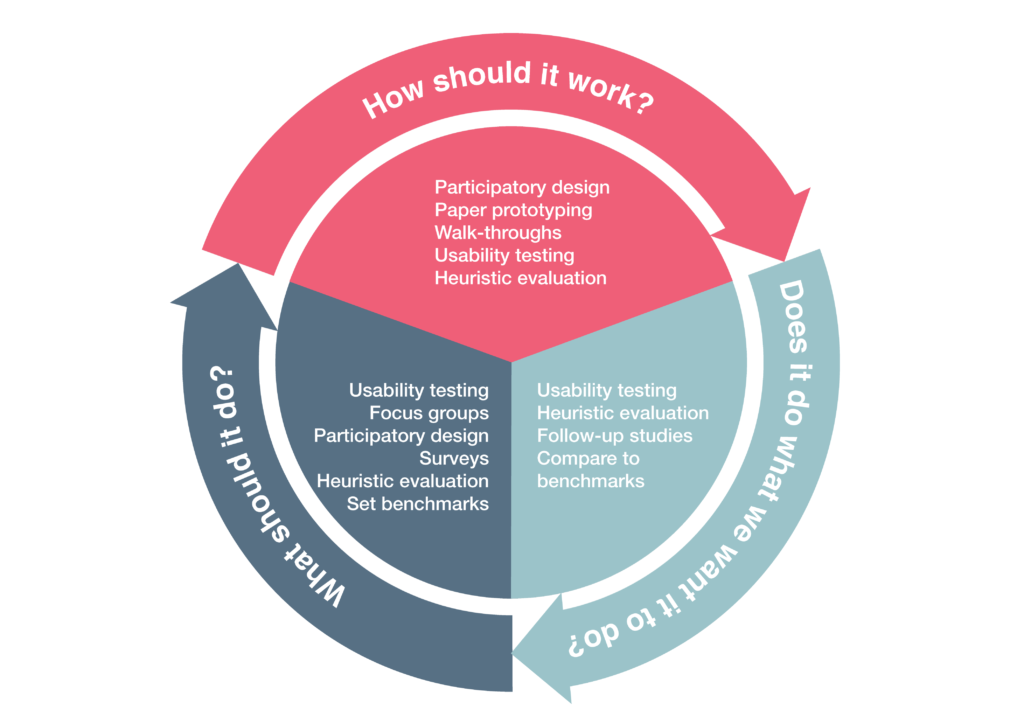Iterative
It is a cyclic process in which a research phase of empirical studies is followed by a design phase, in which solutions are generated which can in turn be evaluated empirically.
Understanding
The design is based upon an explicit understanding of users, tasks and environments.
Multidisciplinary
The design team includes multidisciplinary skills and perspectives.
System-oriented
It recognizes that the interaction between product and user takes place in the context of a bigger sociotechnical system, which in turn operates within the context of economic and political systems, environmental ecosystems, and so on.
Assessment
The empirical assessment of how to use the product.
Focus
The ability to immediately focus attention on the user and the task.
Involving
Users are involved throughout design and development.
Participative
It seeks to enroll the end-user of the product as an active participant in the design process.
User's task
It takes due account of the user’s task. It recognizes that the match between product and user is commonly task-specific.
Pragmatic
It recognizes that there may be limits to what is reasonably practicable in any particular case and seeks to reach the best possible outcome within the constraints imposed by these limits.
Evaluation
The design is driven and refined by user-centred evaluation.
UX
The design addresses the whole user experience.
Empirical
It seeks to base the decisions of the design process upon hard data concerning the physical and mental characteristics of human beings, their observed behaviour and their reported experiences.
Non-Procrustean
It deals with people as they are rather than as they might be; it aims to fit the product to the user rather than viceversa.
Diversity
It takes due account of human diversity. It aims to achieve the best possible match for the greatest possible number of people.
